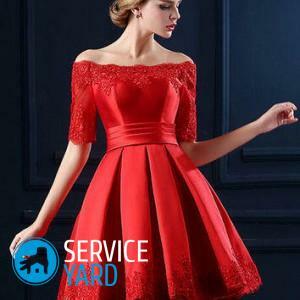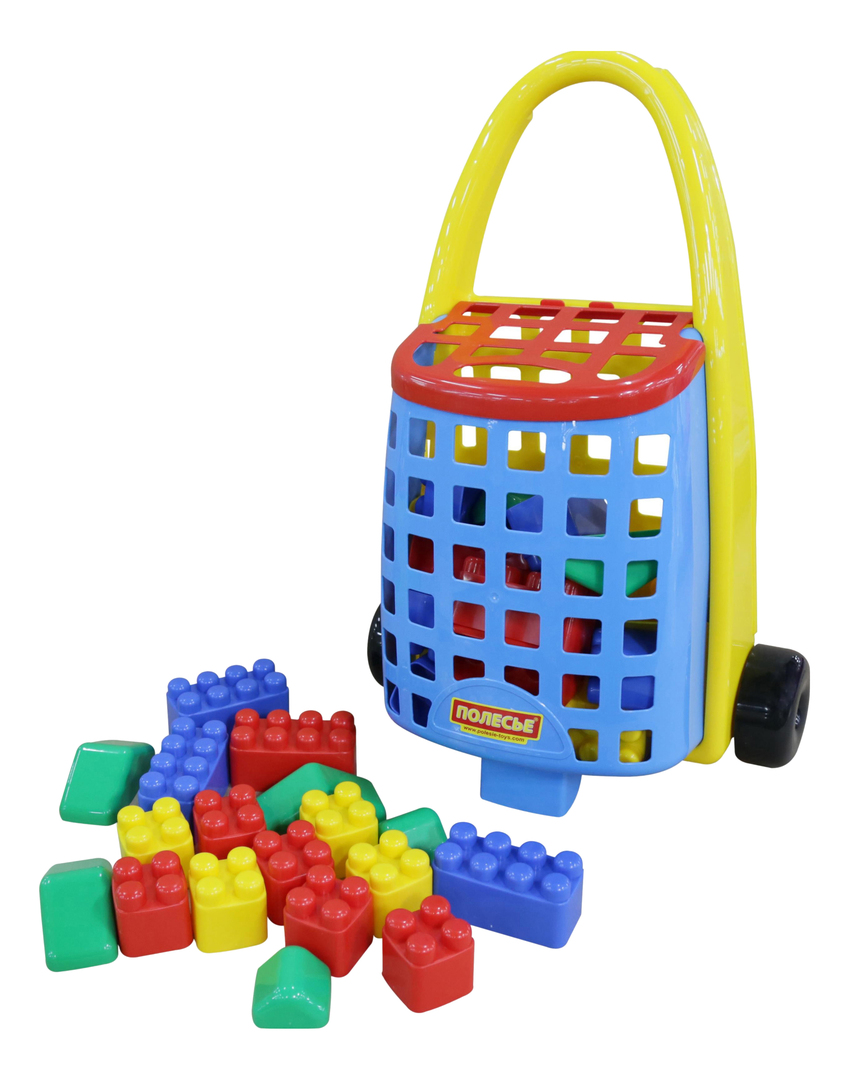
- Who is it for?
- Dress design
- Make a pattern
- Skirt skirt
- Leat
- Fabric calculation
- Get started on sewing
- Dress from natural fabric
- Assembly:
- Knitted dress
- Another knitted dress
The skirt has not been out of fashion for many decades. It can be either an independent wardrobe item or a piece of dress. It is not difficult to sew such models, especially now, when the choice of fabric in stores is large enough that even an inexperienced seamstress has the opportunity to do something interesting without special problems. About how to sew a dress with a skirt-the sun, we will talk in our article.
to the contents ↑To whom is it suitable?
Women have different shapes, but each one wants to be attractive. Dress with a skirt-the sun - a very effective thing, it fits almost everything, but you need to take a very careful look at the choice of fabric. First, look in the mirror and soberly evaluate the features of your physique. You can have a figure:
- slender;
- is dense, but commensurate;
- complete;
- with wide hips but small chest;
- with narrow hips and large breasts.
Thin women can afford both a long dress with a wide skirt, and a short one. Fabric, too, you can take any - from a simple chintz to velvet. On a dense or full woman it will be better to look a long skirt of flowing jersey, it will lie beautiful folds, visually lengthen the figure and make it slimmer.
As for women with wide hips, then, as they say, there are options:
- you want to visually narrow your hips;
- you want to emphasize your forms and make them accent.
For the first case, the skirt-sun does not suit at all, it is preferable to wear a straight silhouette with a strongly understated waist. But if you want to draw attention to the wide hips - feel free to sew yourself an evening dress with a skirt-sun, you can even multi-layered in the manner of the ballroom.
to the table of contents ↑Purpose of the dress
Before you sew a sun dress with your own hands, determine exactly where you will wear it. It can be:
- evening;
- business;
- everyday;
- for summer holidays.
Evening attire
The choice of fabric depends on the destination. For the evening models suitable soft expensive materials:
- silk;
- chiffon;
- knitting;
- velvet;
- velor.
Important! Fashion trend - wide skirts of tulle, the so-called "Shopenki."They, too, are sewn like a sun or a half-sun, with or without lining. Fatin is good because you can make even a very long skirt without a seam. As for the dress, the top can be made of knitwear or silk. For many models, a buckle at the waist is necessary - it can be made on the side or back.

Casual models
There is no fundamental difference between everyday and business clothes - in any case, as far as the choice of materials is concerned. The exception is jeans fabric, which is good for everyday clothes and not suitable for business.
In both cases, suitable woolen and mixed fabrics, stretch, fine synthetics, tartan and much more. Knitwear is truly universal - its range is such that it can be selected for any model.
Summer dress
Summer is preferable for natural fabrics:
- cotton;
- satin;
- cambric;
- staple;
- flax;
- natural and artificial silk.
You can find and suitable blended materials with a high content of cotton, and "smart" fabric, in clothes from which you will feel comfortable in any weather.
Important! Regardless of which material you choose, try to ensure that the width is not less than 150 cm. Then the skirt with almost guarantee can be cut out entirely.
to the table of contents ↑Do pattern
How to sew a sun dress, if the magazines did not find a suitable pattern? It's okay, you are quite able to cope with such difficulties. For a skirt in general, no pattern is not necessary - it is covered directly on the fabric.
Important! If you are afraid, you can try first to make a paper from the paper, for which the most suitable roll millimeter, but in principle, fit and the remaining wallpaper after repair.
You still need:
- pencil( if you cut directly on the fabric, then chalk);
- piece of twine or any other rope;
- button.
Merchands
But first we'll take measurements, and then we'll have to do math. You need to know:
- chest girth;
- waist circumference;
- the length of the side seam from the armpit to the waist;
- the length of the back from the seventh vertebra to the waist;
- the distance between the waist and chest lines;
- the length of the skirt.
Important! It is better to take the measurements once and write it down. If you decide to tackle sewing seriously, you will need them many times.
to the contents ↑Skirt sketch
Now it's time to arithmetic. Pattern skirt-the sun is a ring. You know the length of the inner circle, now you need to determine its radius. Remember the formula P = 2nR, where P is the girth of your waist, and n = 3.14.Accordingly, to find the radius, you need the waist girth to divide by 6.28.
Important! If the integer does not work out, round it up.
To calculate the radius of a larger circle( the lower edge of the hem), we need to add the length of the skirt to the result obtained. Now make a drawing, or cut directly on the fabric:
- Fold the cut, intended for the skirt, in half.
- Find the middle of the fold line and put a dot on the chalk.
- Tie a chalk or pencil to one end of the cord.
- Attach a zero centimeter to the pencil.
- Measure the length of the product on the cord.
- Place a mark on the cord to the mark on the fabric.
- Place the button at this point.
- Draw a semicircle.
- From the same point, draw the second semicircle - the notch whose radius you calculated.
- Cut out the detail, leaving the allowances along the hem and waist.
- On the inner circle, mark the place for the incision under the zipper, but do not cut anything yet.
Important! If the dress is entirely of jersey, no lightning is needed.
to the table of contents ↑Leaf
Do not always make a straight cut of the bodice on the fabric. Although the designers offer a lot of interesting models of knitwear, where the pattern is not needed at all, but it's better to do the drawing. In order to build it yourself, you need accurate measurements and a fair amount of free time. If there is no possibility to order patterns in the atelier, you can proceed as follows:
- Find in your wardrobe a suitable blouse - unnecessary, but in good condition.
- Cut the buttons.
- Thoroughly bend it, and not only the seams, but all the darts.
- Remove all threads.
- Cut or properly iron the allowances and clasp.
- Cut out the grooves.
- The details are well ironed.
Important! As a template, you can use the details themselves, but there's nothing to prevent them from translating them onto paper or thick polyethylene film.
You do not need all the details. It is necessary to save:
- 1 shelf part;
- 1 backrest detail;
- 1 sleeve;
- cuff;
- collar.
With this set, you can make everything from a nightgown to a ball gown.
Important! In order to sew a dress out of jersey, you can take not a blouse, but a shirt.
to content ↑Fabric calculation
To sew a dress with a sun-skirt for a girl or an adult woman, it is necessary to understand how much material is needed for this. For the adult model, it is best to buy a material with a width of at least 150 cm, then the fabric calculation will be extremely simple.
For a short skirt( mini or to the knee):
- The length of the skirt is multiplied by 2.
- Add to this the length of the bodice from the shoulder to the waist.
- Add 15 cm to the result obtained for the seams, bake and free fit.
For a long skirt style:
- Multiply the length of the skirt by 4.
- Add twice the length of the bodice.
- Add 30 cm.
Important! When sewing from a stretch, allowances are not needed. This method of calculation is suitable for a short skirt of narrow fabric.
to the contents ↑We begin sewing
To sew a dress with a sun-skirt with your own hands, you will need some more things besides the fabric and pattern:
- machine;
- sharp scissors;
- sets of needles - for the machine and manual sewing;
- thread, matching fabrics in color and quality;
- chalk or soap;
- iron;
- tailor's pins.
Important! Knit need a special needle.
to the table of contents ↑Dress from natural fabric
Regardless of the style, this dress is best done with a zipper at the waist - cotton, linen, wool and mixed fabrics do not stretch. Lightning is better to sew in from behind, along the middle line.
In this case, and the skirt itself is better done with a seam, so it does not crinkle where there will be lightning. You can act in two ways:
- if the fabric is thin - the ring must be cut;
- if the denim skirt - mark the place of the seam with chalk, fold the workpiece in half along the drawn line and lay a notch in 1 cm from it, capturing both layers of fabric, and for a zipper make a cut strictly along the line.
Open the bodice
If you already have a skirt ready, you can start cutting the bodice. Much depends on whether any other fastener is provided, other than the one that will be placed in the place of attachment of the skirt and bodice.
Important! If you have started sewing for the first time, it is better to choose a style without fastening and without sleeves.
Fulfill:
- Fold the fabric in half along the length.
- Apply a pattern of the shelf so that the middle line coincides with the fold line.
- Attach the pattern to the tailor's pins.
- Circle the pattern strictly along the contour, considering all darts( baby dress is done without darts).
- Circle the part again, making allowances of 1 cm in all sections, do not touch the trowel anymore.
- Spin a circle so that 2 parts are obtained. Since the lightning will be behind, do not forget to leave the allowances and wherever there will be an average seam.

Details for processing cuts
Cut and armholes will need to be processed. In this case, the most suitable for cutting a bake:
- Place a piece of the shelf on the strip of fabric so that the cutout fits completely on the strip.
- Circle the cutout.
- From the edges of the cutout, draw straight lines that should coincide with the shoulder seams - you have an arc.
- At a distance of 3-5 cm, draw a second arc parallel to the first, until it intersects with the shoulder seams. Do not forget about the allowances for the bend and seams.
- Similarly, make cuticle backs for the backrest and armholes.
Important! Details of knitwear can be simply processed with an overlock, and if a dress made of heavy fabric - make a cuticle from something thin, but durable.
to the contents ↑Assembling:
- Collecting details will be much more convenient if you pre-process them. Sweep all sections of the bodice, except the bottom, with an overlock or sweep by hand. Untreated should remain and the top of the skirt.
- Sweep out the darts.
- Sweep the middle seam of the backrest to the point where the zipper begins.
- Sweep the shoulder and side seams.
- Try on what you did.
- If necessary, correct the darts.
- Trim the undercut.
- Stitch the middle seam of the backrest to the point where the zipper begins.
- Stitch the shoulder and side seams.
- Heal allowances.
Machining by sweeping a bite
Before sewing a skirt, it is better to process the throat and armholes. The outer arcs can be sewn or processed with an overlock - in the latter case, they will not need to be cut:
- Tie the beikas of the shelves and backs along the shoulder seams, press ironing allowances.
- Align the inner ring with the lines of the neck of the shelf and backrest, folding the details face-to-face with each other, and sweep.
- Attach the bake to the bodice.
- Carefully press the throat.
- Lay a decorative stitch along the edge, close to the seam.
- Lay one more decorative stitch at a distance of 1-3 cm from the first.
- In the same way, treat the armholes.

Attach the bodice to the skirt
Before final assembly, press on the underside of the side where there will be lightning:
- Sweep the zipper so that the "dog" is on the front side.
- Attach lightning - it's much more convenient than sewing it into an already finished dress( although you can change the sequence).
- Sweep together the bottom of the bodice and the top of the skirt.
- Stitch details.
- Allows to press the allowances on the side of the skirt, you can cut them shortly and work together with an overlock.
- Sew down if you have not done this before.
Dress from knitwear
Sew of knitwear is simpler and more difficult than, say, cotton. It is more difficult to work with the material itself, but you have to perform less operations. In this case, you do not need any tailor's bake or lightning. The skirt itself is a ring without a cut, and the order of assembly will be as follows:
- Process absolutely all slices.
- Attach the skirt to the bottom of the bodice.
- Sweep the bottom of the bodice to the top of the skirt on the wrong side.
- Tear parts.
Important! Darts on a knitted bodice do not need to be done.
to the table of contents ↑Another knitted dress
Knitwear is an absolutely wonderful material that is beautifully draped. And this means that the bodice can be made at all without a paper pattern, making something interesting in the Greek style. The skirt is covered in the same way as in all other cases. As for the top, the sequence will be as follows:
- Cut a piece of jersey length equal to twice the length of the bodice from the shoulder to the waist.
- Fold the piece in half, aligning the edges.
- Find the middle of the fold and make a mark.
- From this mark, make a cut parallel to the edges, to an arbitrary length( the cut can be both front and back).
- Measure 10 cm in one direction and in the other direction and make cuts, too, but along the fold line.
- All cuts, except the edges, handle the overlock.
- Place the symmetrical creases on both sides of the fold line and grind them with tailor's pins or sweep them away.
- Try on your creation and adjust the folds.
- Sweep the creases also along the bottom cut - note that the bottom of the bodice should fit exactly to the top of the skirt in size.
- Stitch the wrinkles.
- Try on the bodice and mark the places where the armholes end.
- Sweep and stitch the side seams from the waist to the ends of the armhole.
- Sew the bodice to the skirt.
Now it's time to update your wardrobe, because you have several variants of models of skirts and dresses with a skirt-sun, which will certainly transform your appearance and make it more feminine and simultaneously spectacular.



